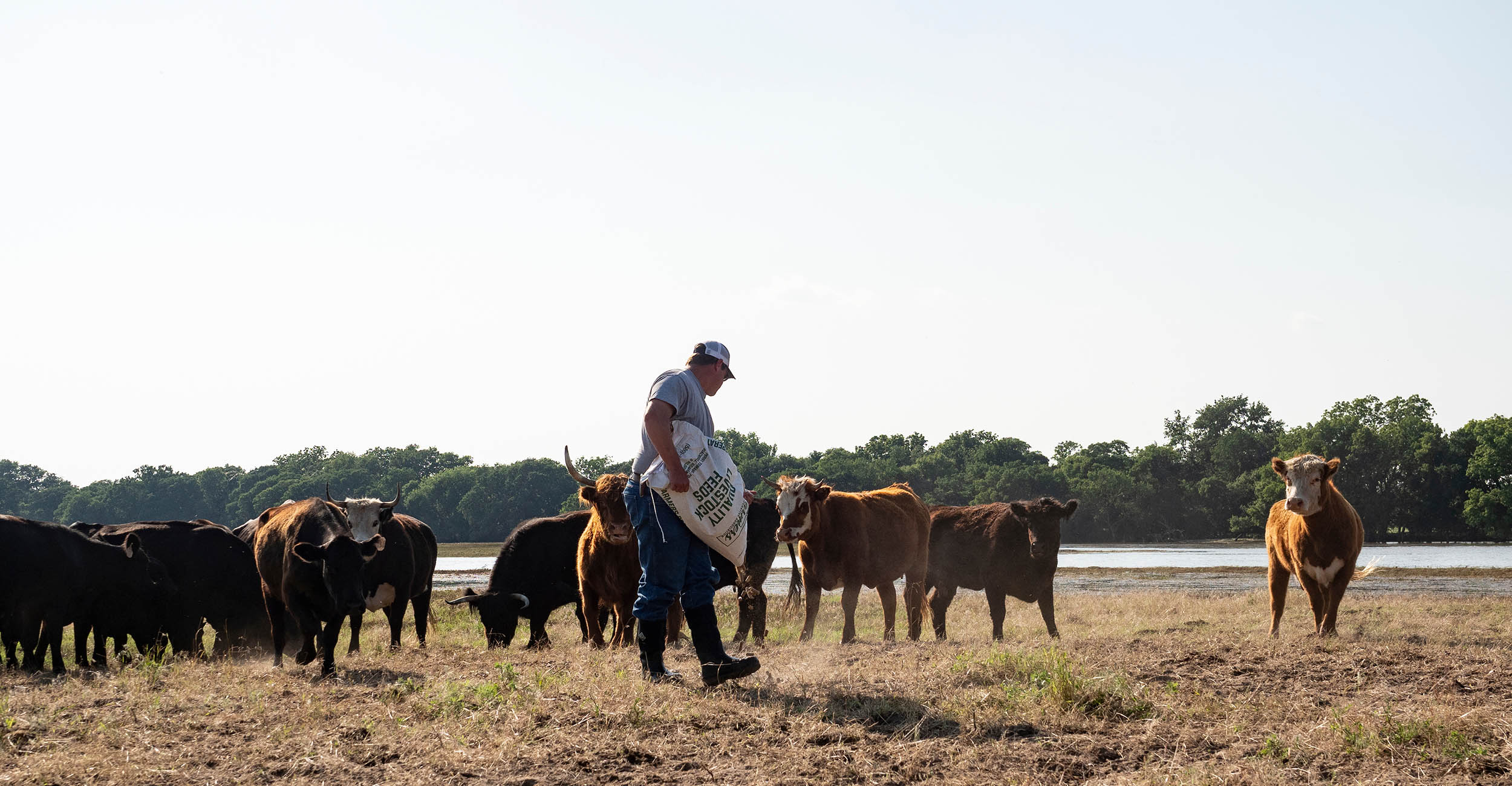
Late summer forage quality a factor in protein supplementation
Wednesday, September 6, 2023
Media Contact: Gail Ellis | Editorial Communications Coordinator | 405-744-9152 | gail.ellis@okstate.edu
As summer comes to an end, cow-calf producers should prepare for a decline in forage quality.
The nutritional value of tallgrass prairie forage is rapidly decreasing as the seasons change, and protein supplementation may be vital for fall-calving herds.
David Lalman, Oklahoma State University Extension beef cattle specialist, said the average lactating beef cow requires 11% crude protein to maintain adequate body condition, but native grass species like big bluestem, switchgrass and Indian grass only offer roughly 6% crude protein in late summer.
A cow grazing native rangeland at this time of year needs an average of 3.3 pounds of protein per day but may only receive half of that due to low forage quality. Without supplementation, a protein deficiency can occur and cause weight loss.
“There’s a lot of moving targets when it comes to making efficient supplementation decisions this time of year,” Lalman said. “A protein deficient cow on native rangeland requires 7.5 pounds of 20% cubes per day to fill the protein gap, raising input costs for producers.”
The amount of required supplementation varies depending on forage quality. Changing the timing of calving season, introducing other forage types and adjusting supplementation to match animal needs will improve herd health.
Lalman recommends keeping an eye on patterns and buildup of cattle feces. If fecal patties begin to stack up, there is potential for protein deficiency within the herd. He advises beginning supplementation before cattle have lost condition. If a protein deficiency is managed while there is abundant forage, higher rates of digestibility can be achieved.
Lalman discusses late summer forage and protein requirements in a recent segment of “SUNUP,” OSU Agriculture’s production agriculture television show. Watch “SUNUP” Saturdays at 7:30 a.m. and Sundays at 6 a.m. on OETA.
Article by Laney Reasner, OSU Ag Office of Communications and Marketing intern
